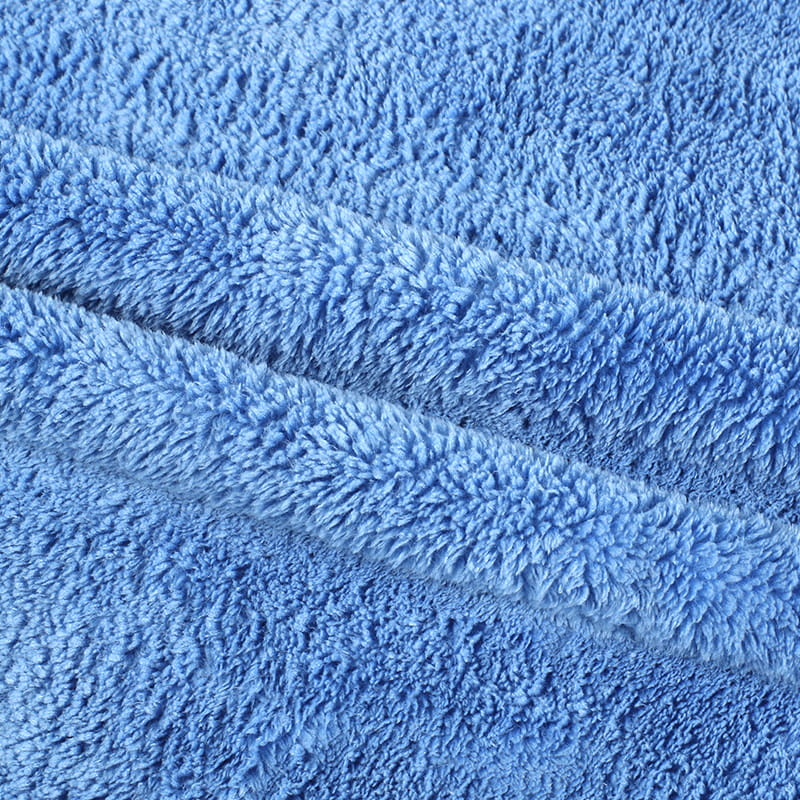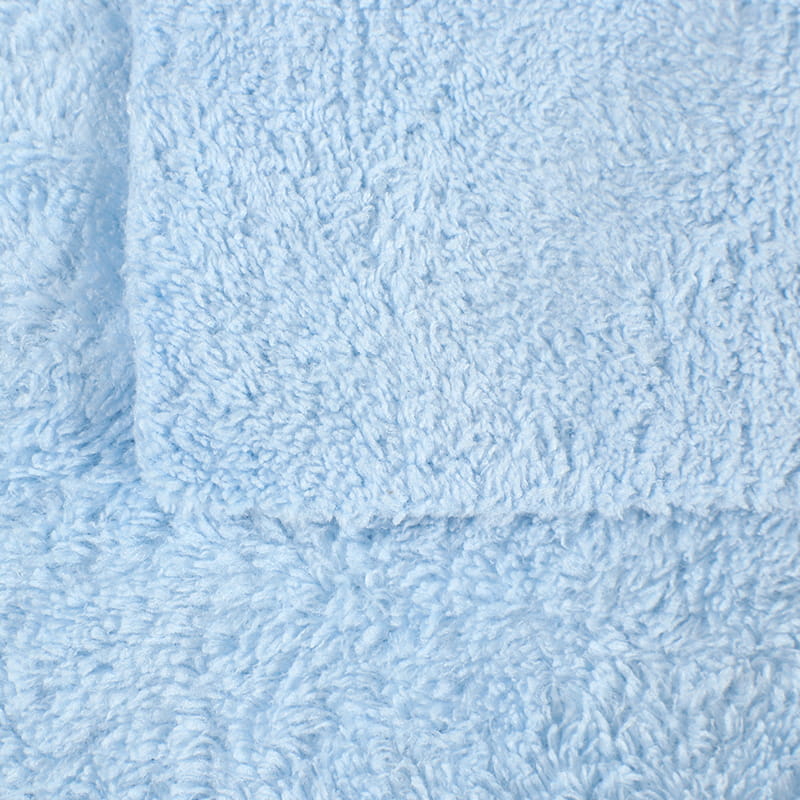We are a national high-tech enterprise. At present, there are many kinds of self-woven and cooperatively processed fabrics, including microfiber warp-knitted towel cloth, weft-knitted towel cloth, coral fleece, etc.
The absorbency of coral fleece towels is primarily determined by the density and construction of the fibers. Heavier and thicker towels typically contain more fibers per unit area, which creates a larger internal surface area for capturing and retaining moisture. This enhanced absorbency is essential for effectively drying vehicles after washing, as it allows the towel to soak up excess water quickly and efficiently. A towel with superior absorbency reduces drying time, minimizes the risk of water spots, and ensures a streak-free finish. The ability to absorb water quickly can significantly enhance the overall car maintenance experience, making it less labor-intensive and more effective.
The structure of thicker coral fleece towels contributes to an increased surface area, allowing them to cover larger areas of the vehicle more effectively. This is particularly beneficial when drying expansive surfaces such as the roof, hood, or trunk of a car. A larger surface area means that users can dry more of the vehicle in fewer strokes, promoting efficiency. Furthermore, the plush texture of a thicker towel helps to lift and trap dirt and debris from the surface of the vehicle while drying, contributing to a more thorough cleaning process. In contrast, thinner towels may require additional passes to achieve similar results, which can extend the drying time and effort involved.
The weight of a coral fleece towel not only affects its handling but also influences its drying effectiveness. Heavier towels often feel more substantial in hand, which can enhance user control during the drying process. This increased weight allows users to apply more pressure if needed, helping to remove water from crevices and contours effectively. For example, when drying around windows, mirrors, or wheel wells, the added weight can assist in drawing moisture away without damaging the vehicle's surface. The balance of weight and texture allows for a more satisfying user experience, fostering confidence in the towel’s ability to perform its intended function.
While thicker coral fleece towels excel in water retention, they may also have longer drying times after use. The dense fibers can hold onto moisture more effectively, which is advantageous for drying but may require more time for the towel to air dry between uses. Users who frequently wash their vehicles might find that thinner towels, which dry more quickly, can be more convenient for fast-paced routines. Conversely, if a user has a dedicated drying process that allows ample time for towel drying, the benefits of a thicker towel may outweigh the drying speed concerns. Understanding this trade-off can help users select the best towel for their specific routines and preferences.
For users who prioritize convenience and portability, the weight of coral fleece towels is an important factor. Lighter, thinner towels are generally easier to handle, store, and transport, making them suitable for mobile car detailing or for keeping in the trunk for quick clean-ups. On the other hand, while heavier towels may convey a sense of durability and quality, they can become cumbersome during extended use. Users may need to consider their physical ability to maneuver a heavier towel, especially when tackling larger vehicles or multiple drying tasks in one session. This aspect of usability can significantly influence user satisfaction and the overall effectiveness of the drying process.

 English
English Espaol
Espaol русский
русский عربي
عربي 简体中文
简体中文
















